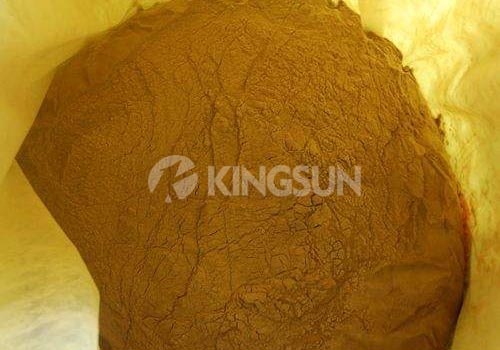Sodium lignosulfonate (sodium salt of lignosulfonic acid) is a natural polymer and anionic surfactant. Its appearance is brown powder or liquid, no special odor, non-toxic, easily soluble in water and lye, precipitated by acid, and has strong dispersing ability. As a kind of surfactant, sodium lignosulphonate (SLS) can produce multiple products through modification, processing, compounding and other methods, mainly used in concrete, cement, resin, rubber, dye, pesticide, ceramics, asphalt, feed, water treatment , coal water slurry, refractories, oil field drilling, compound fertilizers, smelting, casting, adhesives.
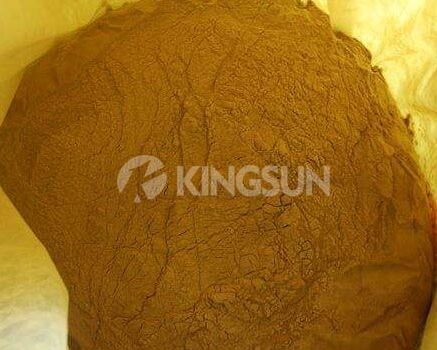 Sodium Lignosulphonate Powder
Sodium Lignosulphonate Powder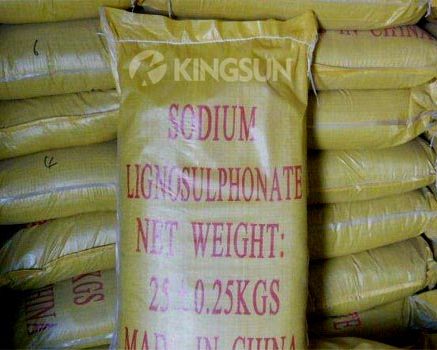 Kingsun Sodium Lignosulfonate
Kingsun Sodium Lignosulfonate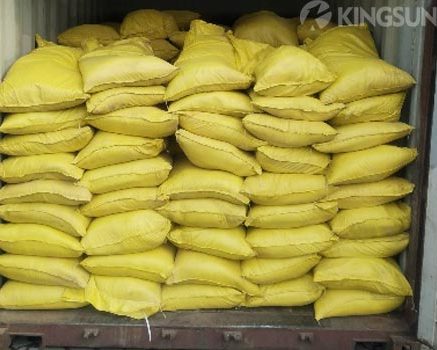 Sodium Lignosulfonate to Vietnam
Sodium Lignosulfonate to Vietnam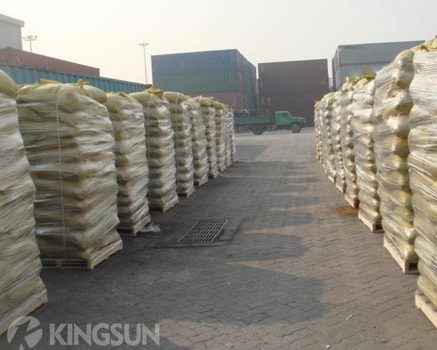 Sodium Lignosulphonate to Iraq
Sodium Lignosulphonate to Iraq
Sodium Lignosulfonate As Concrete Water Reducer
In concrete building materials, sodium lignin sulfonate for sale can be used as a concrete water reducing admixture, which can significantly reduce water consumption and improve the fluidity and plasticity of concrete. At the same time, sodium lignosulfonate can also reduce the initial hydration heat of cement and reduce the shrinkage and cracking of concrete. This product can enhance the compressive strength and durability of concrete. By improving the microstructure of concrete, improving the dispersibility and hydration degree of cement particles, the mechanical properties of concrete are enhanced. In addition, sodium lignosulphonate powder can be formulated into early strength agent, retarder, antifreeze agent, and pumping agent.
Therefore, the construction industry is currently the industry with the largest demand for sodium lignosulfonate. This is because sodium lignosulfonate in concrete has many advantages, such as high water reducing performance, small slump loss, high strength, slow setting, low cost, high efficiency, strong market competitiveness, and environmental protection.
| Items | Sodium Lignosulfonate |
| Appearance | Yellow Brown Powder |
| Dry Matter % | 92 min |
| Lignosulphonate % | 60 min |
| Moisture % | 7 max |
| Water-insoluble matter % | 0.5 max |
| Sulfate (as Na2SO4) % | 4 max |
| PH Value | 7.5-10.5 |
| Content of Ca and Mg % | 0.4 max |
| Total reducing matter % | 4 max |
| Content of Fe % | 0.1 max |
| Packing | Net 25kg PP bags; 550kg jumbo bags; |
- Performance Characteristics
- The mechanism action of lignin
- How to use it
1. Solubility and stability. Sodium lignin sulfonate can be dissolved in water of any hardness and is not affected by changes in pH. This good solubility allows it to maintain stable performance in various application environments. The aqueous solution has good chemical stability, is biodegradable, and does not decompose during long-term storage, which is beneficial to environmental protection and sustainable development.
2. Dispersibility and adsorption. This product has a strong dispersibility and can effectively disperse solid particles in an aqueous medium to form a stable suspension. This dispersibility is mainly due to the hydrophilic and hydrophobic groups in its molecular structure, which can form an adsorption layer on the surface of the particles to prevent agglomeration between particles.
The sodium lignosulfonate can be adsorbed on the surface of various solid particles to exchange metal ions, and produce condensation or hydrogen bonding with other compounds due to the active groups in its organizational structure. This adsorption makes it play an important role in many industrial fields.
3. Environmental protection and sustainability. It is a biodegradable natural polymer that is environmentally friendly. No harmful substances are produced during use, and it is easy to recycle and treat.
The raw materials of sodium lignosulphonate come from a wide range of sources, mainly from lignin, a by-product of the pulp and paper industry. By sulfonating it, it can be converted into high-value-added chemicals to achieve resource recycling and sustainable development.
4. Other properties. Sodium lignosulphonate powder also has a certain degree of bonding and can be used for bonding and molding of powdered and granular materials such as iron ore powder and lead-zinc ore powder. In addition, it also has multiple functions such as wetting, emulsification, and dispersion, and is also widely used in printing and dyeing, papermaking, petroleum, geological exploration and other fields.
After adding sodium lignosulfonate to the concrete, the hydrophobic group of the water reducing agent is directionally adsorbed on the surface of the cement particles, and the hydrophilic group points to the aqueous solution, forming a monomolecular or multi-molecular adsorption film, so that the cement particles have the same surface. The charges are repelled and dispersed, and excess water is released from between the particles to achieve the purpose of water reduction.
At the same time, due to the reduction of the surface tension of water and the interfacial tension between cement particles, the water consumption is correspondingly reduced under the condition of maintaining the same fluidity, which also plays the role of water reduction. Kingsun sodium lignosulphonate powder can greatly reduce the hydration of concrete, reduce the porosity, increase the compactness of concrete, and greatly improve the strength and impermeability of concrete.
- During the construction process, we must strictly control the dosage. Once the amount of sodium lignin sulfonate is too large, it may cause the coagulation time to be significantly prolonged.
- Product delay increases significantly as temperature decreases. The lower the temperature, the slower the strength increase.
- The sodium lignosulfonate powder is easily soluble in water and can be formulated into an aqueous solution of 1%-50% When dissolving, put water into the container first, then quickly add sodium lignin sulfonate while stirring to avoid agglomeration or prolong dissolution time. After being formulated into a solution, it should be used up within ten days to prevent mildew.
- Before use, we need to carry out the adaptability test of the cement variety. This is because concrete water reducers must be tested and meet the technical requirements before they are put into engineering use.
- For concrete with air-entrained amount, when the air-entrained amount is too large, it is necessary to choose an appropriate vibration time or take other defoaming measures to make the air content meet the technical requirements.
More Applications
- Used as a dispersant in the printing and dyeing industry. The dispersant NNO is compounded with sodium lignosulphonate as the main raw material. Used as dispersant and filler for vat dyes and disperse dyes, sodium lignosulphonate can increase the color strength of the dye, make the coloring more uniform, and shorten the grinding time of the dye.
- It can be used as filler, dispersant and suspending agent in pesticide processing, greatly improving the suspension rate and wetting performance of wettable powder.
Adding this product in the process of preparing coal water slurry can increase the output of high mill, maintain the normal state of pulping system, reduce the power consumption of pulping, increase the concentration of coal water slurry, and reduce the oxygen consumption and coal consumption in the gasification process. The efficiency of cold gas is improved, and the viscosity of coal-water slurry can be reduced to achieve certain stability and fluidity.
In the manufacturing process of large-scale wall and floor tiles and refractory bricks, the raw material particles of the body can be firmly bonded, and the strength of the dry body can be increased by more than 20%-60%.
It can be used for pressing balls of iron ore powder, lead-zinc ore powder, pulverized coal, and coke powder; pressing of cast iron and cast steel sand molds; extrusion molding of mud brick wall and floor tiles; ball formation of mineral materials It can obtain good effects such as high strength, good stability, and lubricating molds.
In drilling, sodium lignosulfonate can be used as diluting dispersant and viscosity reducer to improve fluidity in crude oil transportation and reduce energy consumption. In petroleum products, it is used as a cleaning agent, dispersant, high-alkaline additive, antirust agent, antistatic agent, emulsifying viscosity reducer, wax-eliminating and anti-wax agent, etc.
Kingsun - Leading Sodium Lignosulphonate Manufacturer & Supplier
With increasing global attention to sustainable development and environmental protection, the demand for green and biodegradable materials is growing across various industries. Sodium lignosulfonate is derived from natural lignin and is biodegradable, meeting environmental requirements. In industries such as papermaking, construction, and agriculture, using sodium lignin sulfonate to replace traditional non-degradable or highly polluting additives helps reduce environmental pollution and achieve sustainable development.
As a professional manufacturer and supplier in China, Henan Kingsun chemical Co., Ltd. has more than 15 years’ experiences in construction chemicals industry. In addition, we also provide high quality sodium lignosulfonate, sodium gluconate, PCE superplasticizer, sodium naphthalene superplasticizer and calcium lignosulphonate,etc.
- Kingsun has its own factory and raw materials, as well as advanced production lines, so we can guarantee the sufficient supply and deliver goods on time.
- All of Kingsun products have been exported to more than 30 countries and regions, including Turkey, Saudi Arabia, UAE, South Africa, Jordan, Russia, Peru, Bangladesh, South Korea, India, Indonesia, Thailand, Philippines, Vietnam, Malaysia, Singapore, Pakistan, Bahrain, Mexico, Chile, Israel, Qatar, Brazil, etc.
- We always supply high quality products, competitive sodium lignosulfonate price and excellent services for you!

